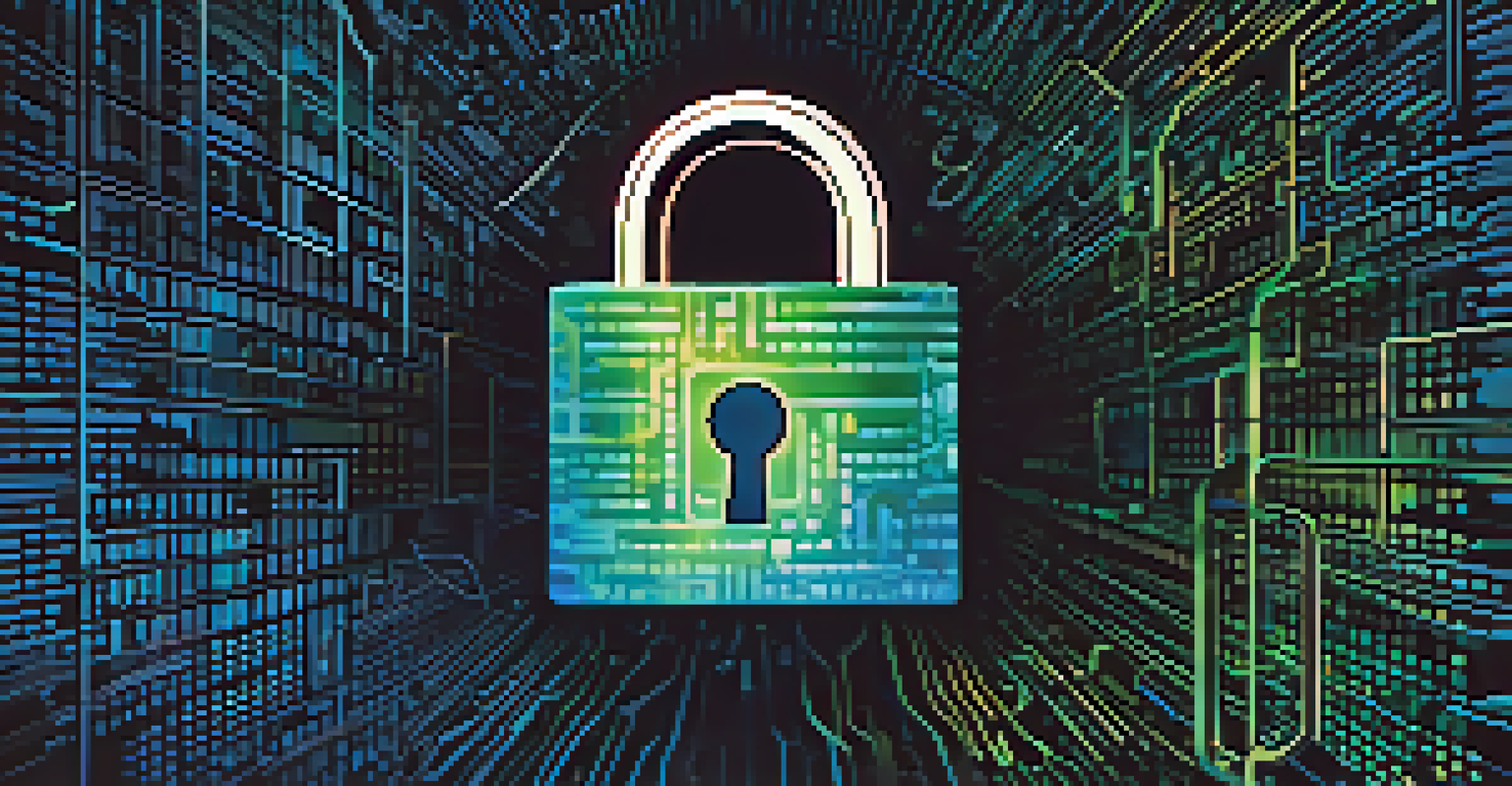Data Security Measures: Safeguarding Your Data Assets

Understanding the Importance of Data Security
In today's digital age, data security is not just a luxury—it's a necessity. Whether you're a small business or a large corporation, protecting sensitive information should be a top priority. Data breaches can lead to significant financial losses, reputational damage, and legal consequences.
Data is the new oil. It's valuable, but if unrefined it cannot really be used. Data needs to be broken down, analyzed for it to have value.
Imagine your business as a castle; the data you hold is like the treasure inside. Without proper security measures, it’s vulnerable to attack. Just like you would fortify your castle walls, you need to secure your data assets to prevent unauthorized access.
Ultimately, understanding the importance of data security sets the foundation for implementing effective measures. A proactive approach today can save you from potential crises tomorrow.
Common Threats to Data Security
Data security threats come in many forms, from cyberattacks to human error. Malware, phishing scams, and ransomware are just a few examples of the malicious tactics used by cybercriminals. Each of these threats can compromise your data integrity and lead to devastating consequences.

Think of these threats as wolves lurking around your castle. They are cunning and always looking for weaknesses to exploit. Understanding these threats is crucial in developing a robust defense strategy that can withstand various attacks.
Data Security is Essential
Protecting sensitive information is a necessity for businesses to avoid financial losses and reputational damage.
Moreover, human error remains one of the biggest vulnerabilities. Simple mistakes, like using weak passwords or falling for phishing emails, can open the door to significant data breaches. Awareness and education are vital in minimizing these risks.
Implementing Strong Password Policies
One fundamental step in safeguarding your data is implementing strong password policies. Passwords are often the first line of defense against unauthorized access, so they need to be complex and unique. Encourage your team to use a mix of letters, numbers, and symbols and to change passwords regularly.
The greatest danger in times of turbulence is not the turbulence; it is to act with yesterday's logic.
Consider using a password manager to help employees generate and store strong passwords securely. This tool acts like a vault, keeping sensitive information safe while ensuring that users don’t resort to easily guessable passwords.
Moreover, multi-factor authentication (MFA) adds an extra layer of security. By requiring additional verification, such as a code sent to a mobile device, you can significantly reduce the risk of unauthorized access even if a password is compromised.
Regular Software Updates and Patches
Keeping software updated is a vital yet often overlooked aspect of data security. Software developers regularly release updates and patches to fix vulnerabilities and improve security. By neglecting these updates, you leave your systems open to exploitation.
Think of software updates as routine maintenance for your castle. Just like you wouldn’t ignore a crumbling wall, you shouldn’t ignore your software. Regular updates help fortify your defenses against emerging threats.
Employee Training is Key
Regular training equips employees with the knowledge to recognize and mitigate data security threats effectively.
Additionally, automate software updates whenever possible. This ensures that you’re always protected with the latest security features without relying on manual processes that can easily be forgotten.
Data Encryption: Protecting Sensitive Information
Data encryption is a powerful tool in the fight against data breaches. By converting sensitive information into a coded format, encryption ensures that even if data is intercepted, it remains unreadable to unauthorized users. This is especially crucial for financial and personal information.
Think of encryption as a secret language that only you and your authorized users understand. Even if someone were to get their hands on your data, they would be unable to comprehend it without the proper decryption keys.
Implementing encryption across all devices and networks helps create a secure environment for your data. It’s an essential layer of protection that should be part of your overall data security strategy.
Employee Training and Awareness Programs
Investing in employee training is crucial for maintaining data security. Your team should understand the importance of data protection and be aware of common threats. Regular training sessions can equip them with the knowledge needed to recognize and avoid potential risks.
Consider these training sessions as a form of defense training for your castle's guards. Just as guards need to know how to spot intruders, your employees must learn to identify phishing attempts and other malicious activities.
Regular Backups Ensure Recovery
Maintaining up-to-date data backups and a recovery plan safeguards against data loss from various threats.
Moreover, fostering a culture of security awareness encourages employees to take data protection seriously. When everyone understands their role in safeguarding data, it creates a united front against potential threats.
Regular Data Backups and Recovery Plans
Regularly backing up data is a crucial safeguard against data loss. Whether due to a cyberattack, hardware failure, or human error, having up-to-date backups ensures that you can quickly restore your information without significant disruption. It's like having a safety net beneath your tightrope act.
Establishing a comprehensive data recovery plan is equally important. This plan should outline the steps to take in case of a data breach or loss, ensuring that your team knows exactly what to do and can act swiftly to minimize damage.

Ultimately, regular backups and a solid recovery plan provide peace of mind. You can focus on your business knowing that your valuable data assets are secure and recoverable.